11 Simple Pasta Sauces Italians Actually Use at Home
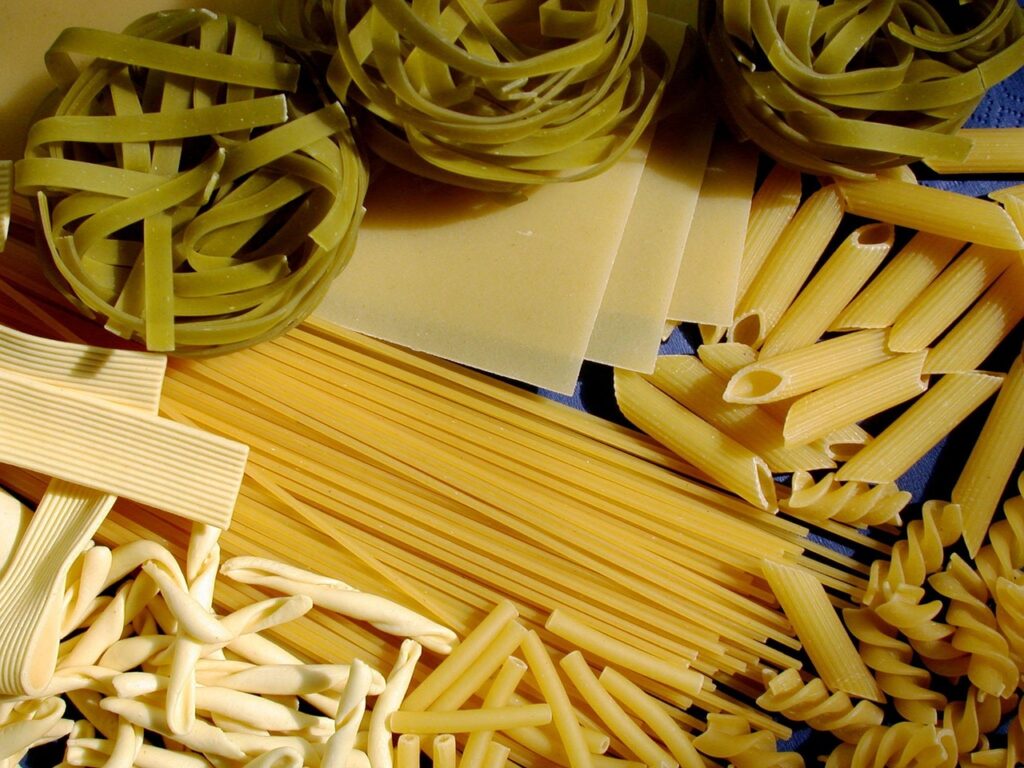
Here’s the thing about Italian pasta sauces: they’re not trying to be fancy. The best ones are simple, built on fresh ingredients, and balanced so every bite makes you want the next one. In Italy, pasta sauce isn’t just something poured on top; it’s part of the pasta itself. The sauce clings, blends, and complements without drowning the noodles. Many classic sauces have been around for generations, each with a story and a regional twist. You don’t need an all-day simmer or a cabinet full of spices to make them work. With just a few pantry staples, you can bring a little Italian comfort to your own table. Here are eleven sauces Italians actually make at home, and why they’re worth trying.
1. Pomodoro
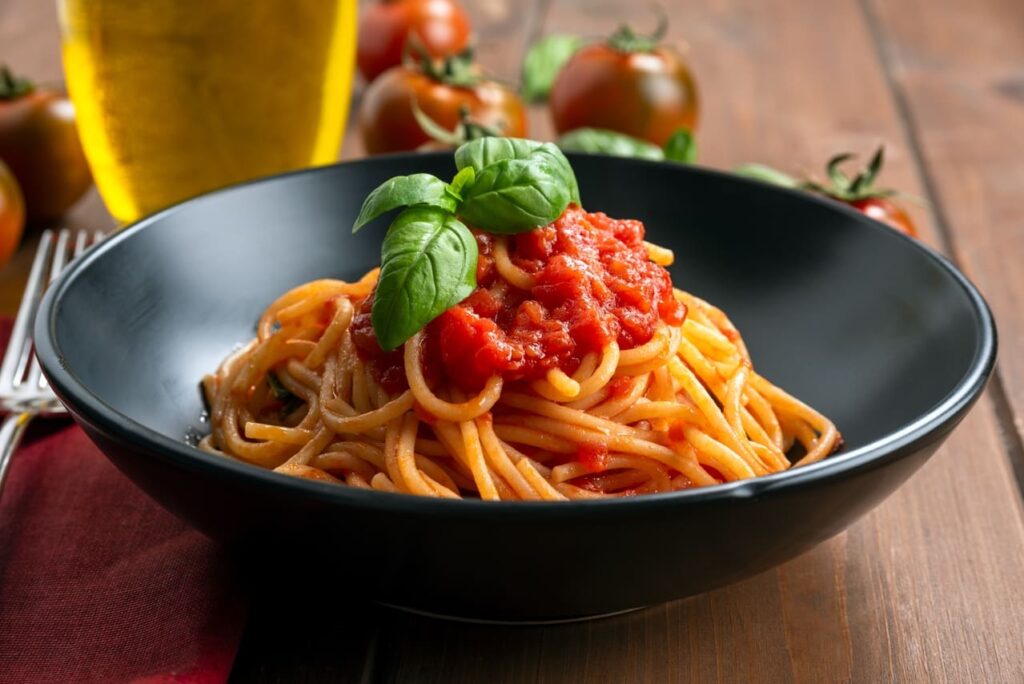
Pomodoro sauce is as straightforward as it gets; just ripe tomatoes, olive oil, garlic or onion, and fresh basil. The trick is to cook it briefly so the tomatoes keep their fresh, bright flavor instead of becoming heavy. Italians often pass the sauce through a food mill for a silky texture. Salt is added with care, and basil goes in at the very end so the aroma stays fresh. It’s not a sauce meant to overpower; it’s there to let the pasta shine. A perfectly cooked spaghetti or penne tossed with Pomodoro is as close as you can get to a weeknight pasta ritual in Italy.
2. Aglio e Olio
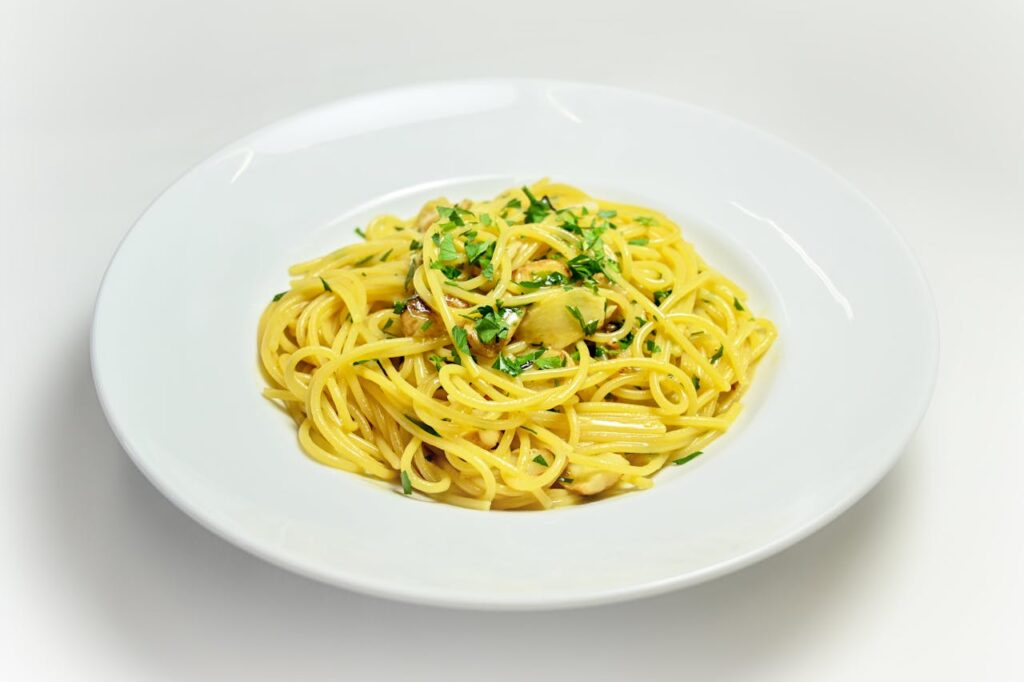
This sauce is proof that three ingredients- garlic, olive oil, and pasta water; can do magic. The garlic is sliced thin and gently warmed in olive oil until fragrant, never burnt. A pinch of chili flakes often makes its way in, adding a subtle heat. The starchy pasta water emulsifies with the oil, coating each strand. Aglio e Olio is often a late-night meal in Italy, something quick and comforting after a long day. It’s light, flavorful, and entirely about balance. The goal is to taste the olive oil first, then the sweetness of the garlic, and finally the gentle kick from the chili.
3. Cacio e Pepe
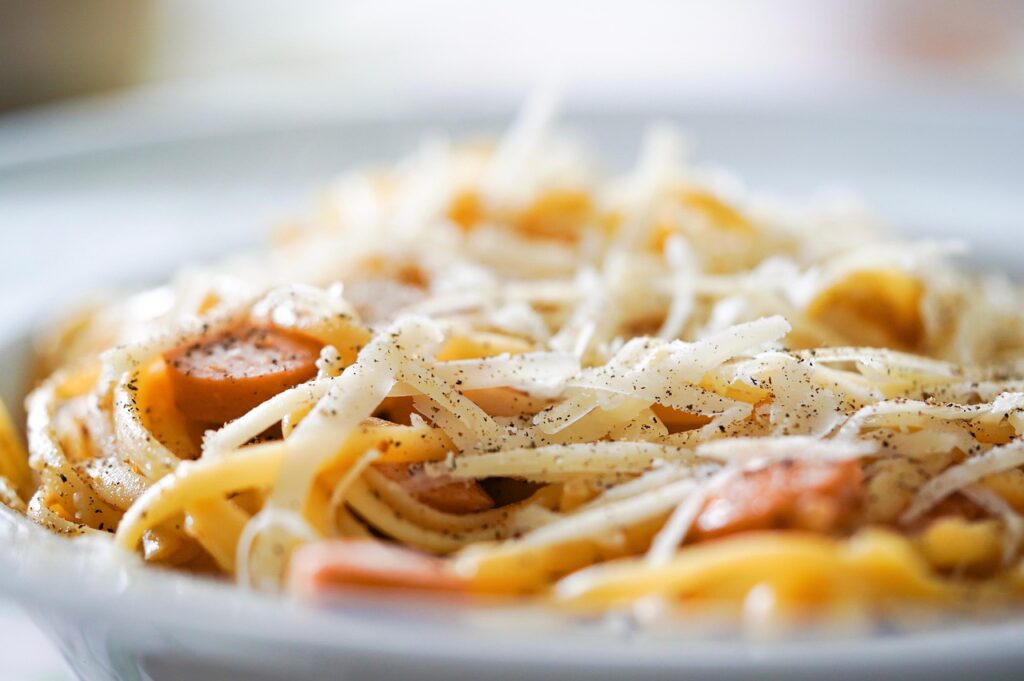
Cacio e Pepe literally means “cheese and pepper,” and that’s all you need; plus a little pasta water to tie it together. The sauce relies on finely grated Pecorino Romano, which melts into a creamy coating when mixed with the hot pasta. Freshly cracked black pepper gives it bite and fragrance. Italians stir quickly to prevent clumping, creating a silky, peppery sauce that feels indulgent without cream or butter. Traditionally made with tonnarelli or spaghetti, Cacio e Pepe is a lesson in technique over ingredients. Done right, it’s one of the richest-tasting pasta dishes you can make in under 15 minutes.
4. Pesto alla Genovese
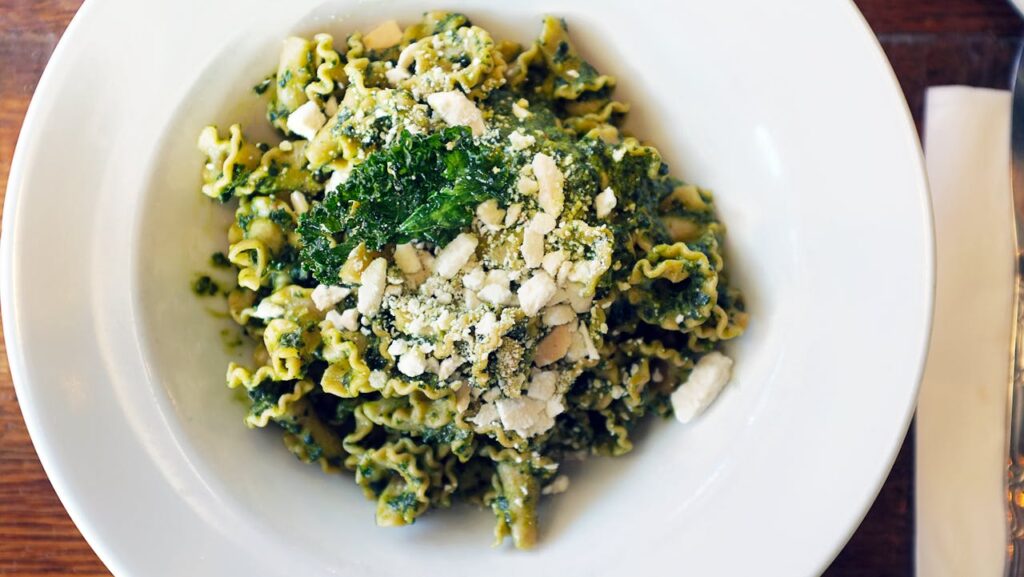
This basil-based sauce from Liguria is fresh, aromatic, and never cooked. Italians traditionally make it with a mortar and pestle to avoid bruising the basil, though a blender works if you’re careful. The ingredients-fresh basil, pine nuts, garlic, Parmesan, Pecorino, and olive oil; are combined until smooth. Pesto clings beautifully to pasta shapes like trofie or linguine, often thinned slightly with pasta water for perfect coverage. Its bright, herbaceous flavor pairs well with vegetables or potatoes stirred into the pasta. In Italy, pesto isn’t drowned on the pasta; it’s folded in just enough to coat and perfume every bite.
5. Amatriciana
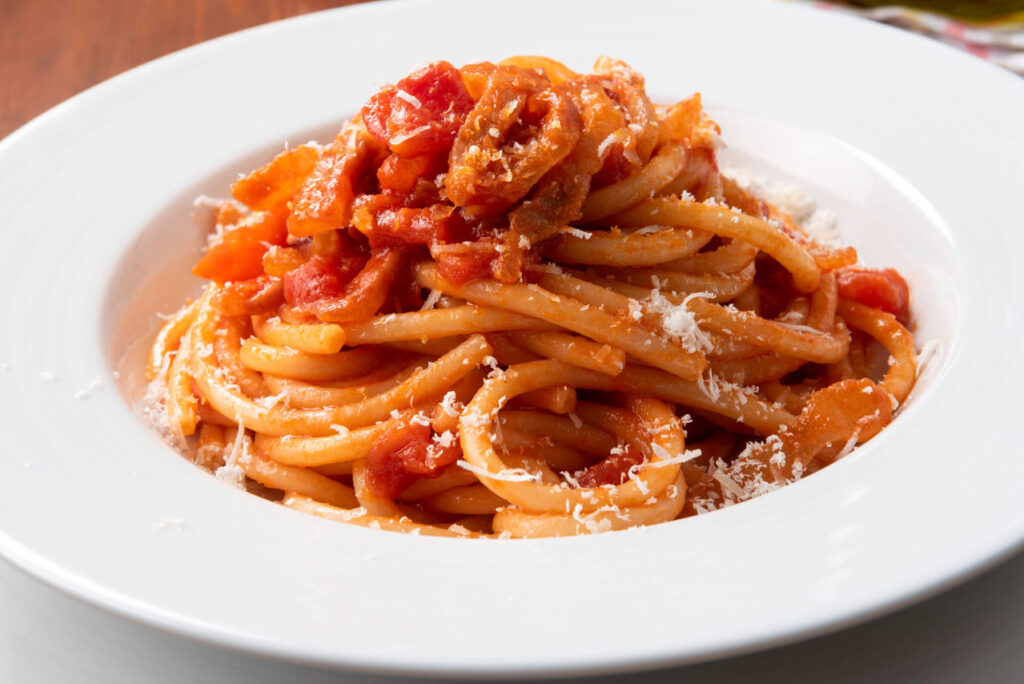
From the town of Amatrice, this sauce blends guanciale (cured pork cheek), tomatoes, and Pecorino Romano. The guanciale is rendered slowly, releasing flavorful fat that becomes the base of the sauce. Tomatoes simmer briefly with the pork, creating a rich but balanced taste. A sprinkle of Pecorino before serving adds saltiness and depth. Italians typically pair Amatriciana with bucatini, whose hollow strands hold the sauce perfectly. The magic lies in the contrast: the smoky-salty pork, the tang of the tomatoes, and the creaminess of the cheese. It’s hearty, but it still tastes clean and distinct in every bite.
6. Carbonara
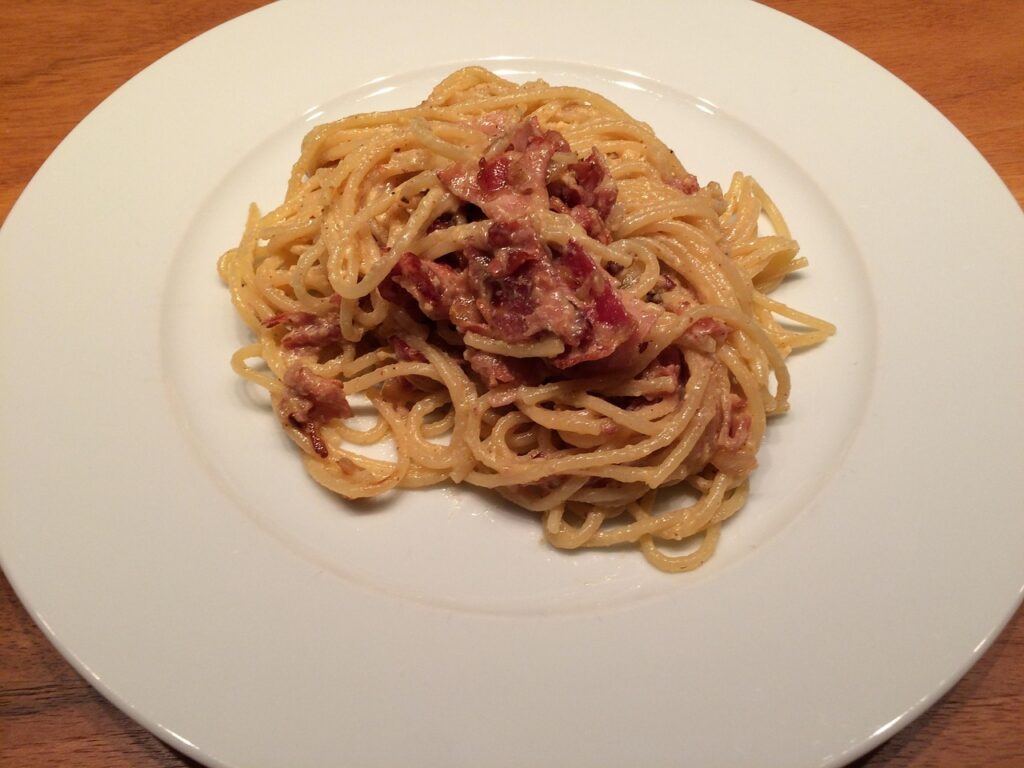
Authentic Carbonara contains no cream; just egg yolks, Pecorino Romano, black pepper, and guanciale. The heat from the pasta gently cooks the eggs, creating a creamy sauce without scrambling them. The guanciale adds smoky, savory depth, while the Pecorino brings sharpness. Black pepper cuts through the richness, balancing each mouthful. Spaghetti is the most common choice, but rigatoni also works well. The key is timing: combine everything while the pasta is hot but off the heat, so the eggs emulsify instead of cooking into clumps. A proper Carbonara is rich, silky, and far more delicate than heavy restaurant versions.
7. Puttanesca
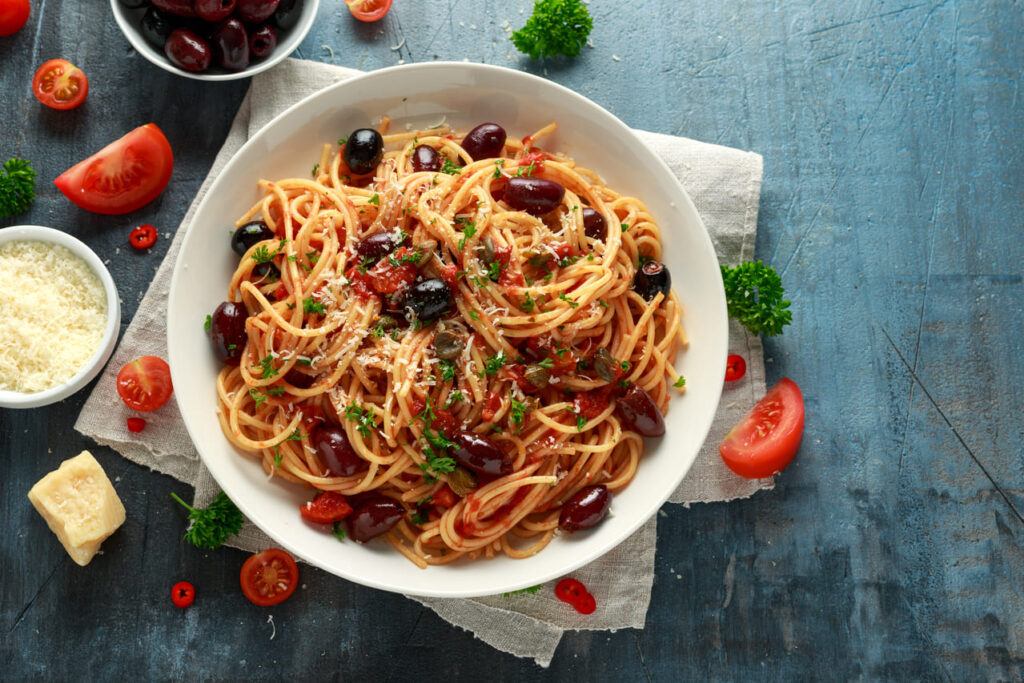
This bold, briny sauce combines tomatoes, garlic, anchovies, capers, and olives. The anchovies melt into the oil early on, creating a savory backbone without tasting overtly fishy. Capers and olives add a salty punch, while tomatoes bring balance and acidity. Italians often make Puttanesca when they need something quick but crave strong flavors. It pairs beautifully with spaghetti, which lets the sauce cling while still leaving bursts of olives and capers in every bite. It’s not a shy sauce; its aroma fills the kitchen, and its taste demands attention.
8. Ragù alla Bolognese
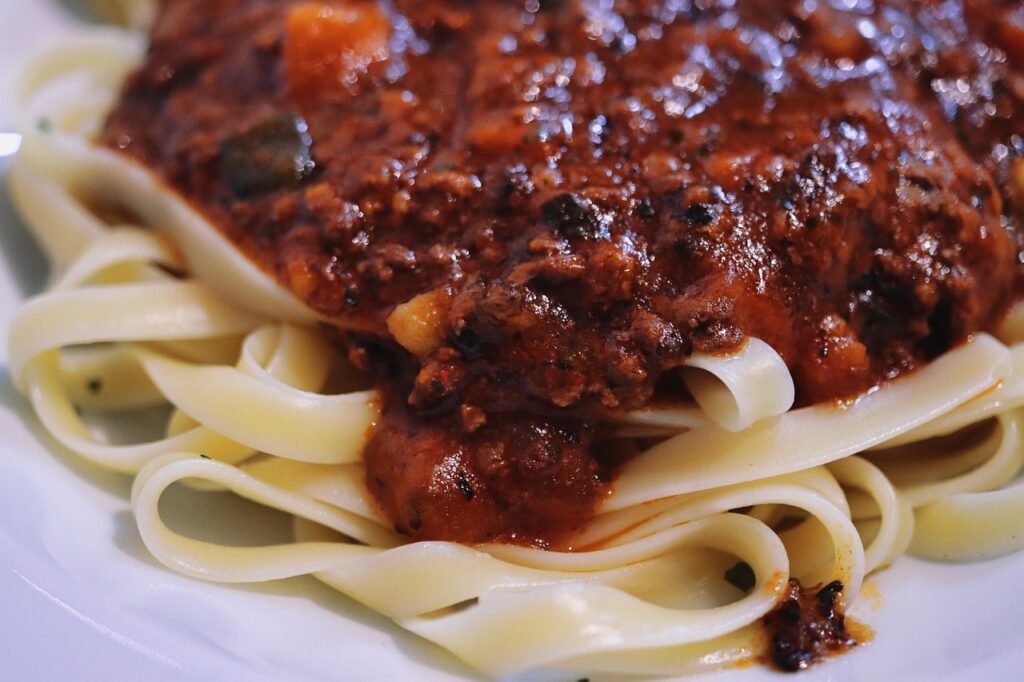
Bolognese is not just “meat sauce.” The authentic version uses a mix of ground beef and pork, cooked slowly with onion, carrot, celery, tomato paste, wine, and milk or cream. The long, gentle simmer melds everything into a deep, savory sauce. In Italy, Bolognese is served with tagliatelle, whose wide ribbons catch the sauce perfectly. It’s rich without being greasy, and the touch of dairy softens the acidity of the tomatoes. While it takes more time than most sauces on this list, it’s worth making in a big batch to freeze for future meals.
9. Salsa di Noci

A specialty from Liguria, Salsa di Noci is a creamy walnut sauce often served with pansotti, a type of filled pasta. The walnuts are blended with milk-soaked bread, garlic, Parmesan, and olive oil, creating a smooth, nutty coating. It’s mild yet flavorful, making it a nice change from tomato-based sauces. Italians often serve it at room temperature or slightly warmed, so the delicate walnut flavor isn’t lost. Its earthy richness works well with pasta shapes that have nooks and folds to trap the sauce.
10. Sugo all’Arrabbiata
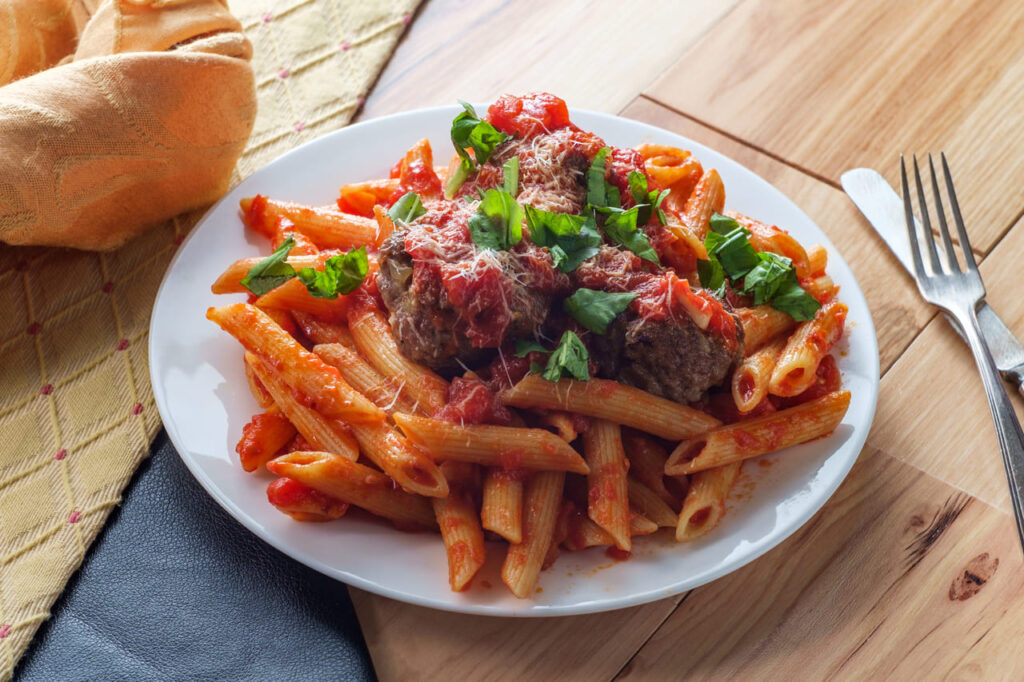
Arrabbiata means “angry” in Italian, a nod to the sauce’s heat. Made with tomatoes, garlic, olive oil, and plenty of chili peppers, it’s a bright, spicy alternative to standard tomato sauces. The heat is noticeable but balanced so the tomato flavor still shines. Italians often make it with penne, whose ridges hold the fiery sauce. Arrabbiata is quick to prepare, but the intensity of flavor makes it feel like more than a weeknight dish. It’s the kind of pasta you serve when you want a little kick without overpowering everything else on the plate.
11. Gricia
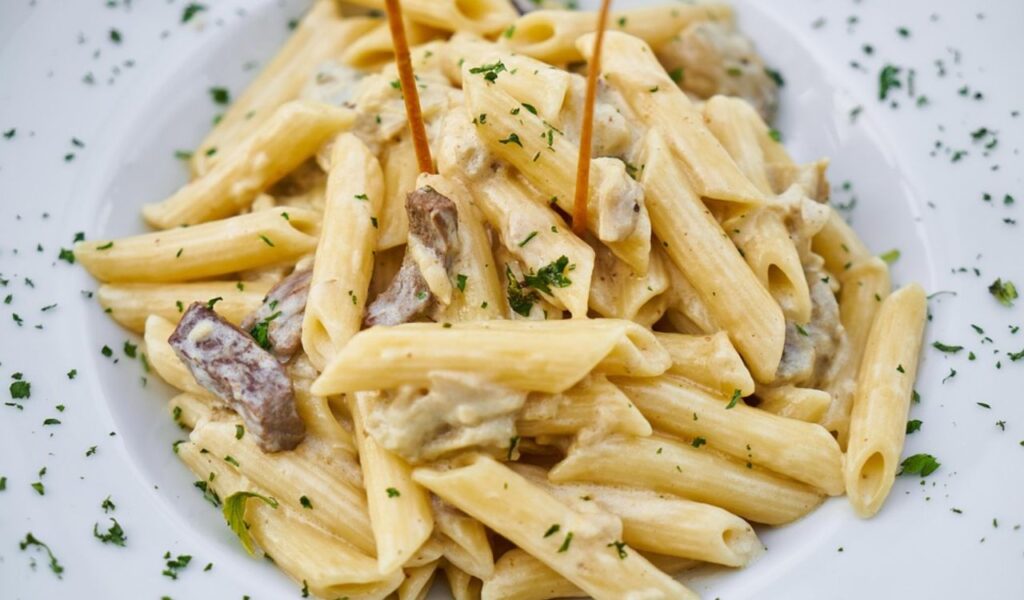
What makes Gricia so compelling is how it proves that a pasta sauce doesn’t need a long ingredient list to feel deeply satisfying. This Roman classic is built on just guanciale, Pecorino Romano, and black pepper, yet the flavor lands with surprising richness. As the guanciale renders, it releases savory fat that becomes the base of the sauce. A bit of starchy pasta water helps it cling to the noodles, creating a glossy coating that tastes both rustic and refined.







